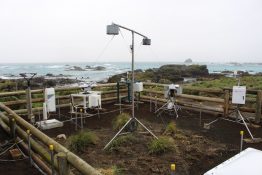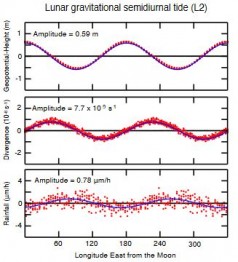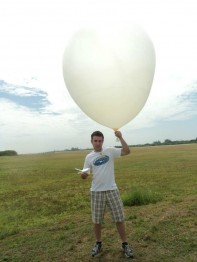It turns out not all clouds are created equal. Though Seattle presents an ideal location for cloud-gazing, it can’t reproduce the unique clouds in a part of the world thought to play a key role in the planet’s climate. The vast Southern Ocean circling Antarctica soaks up a large portion of the carbon emissions taken up by the oceans and stores some of the extra heat trapped by the carbon emissions that remain in the air.
Read more at UW Today »UW Environment’s Abigail Swann and Alex Gagnon receive NSF Early Career Award
Abigail Swann, assistant professor in the Department of Atmospheric Sciences and Department of Biology and Alex Gagnon, assistant professor with the School of Oceanography, each recently received an Early Faculty Development (CAREER) Program Award from the National Science Foundation. Swann works to understand when, where, and how plants influence the climate, and will receive support for her project titled “Ecosystem-driven Accelerations and Oscillations in the Coupled Earth System.”
Read more »For weather forecasting, precise observations matter more than butterflies
In the 1970s, scientist Edward Lorenz famously asked whether the flapping of a butterfly’s wings in Brazil could lead to a tornado in Texas. During the decades since, the butterfly effect and chaos theory have sparked countless debates and pop culture references. But the question also holds practical importance: What do small, unpredictable events mean for the future of weather prediction?
Read more at UW Today »Moon’s tidal forces affect amount of rainfall on Earth
When the moon is high in the sky, it creates bulges in the planet’s atmosphere that creates imperceptible changes in the amount of rain that falls below. New University of Washington research to be published in Geophysical Research Letters shows that the lunar forces affect the amount of rain – though very slightly. “As far as I know, this is the first study to convincingly connect the tidal force of the moon with rainfall,” said corresponding author Tubas Kohyama, a UW doctoral student in the Department of Atmospheric Sciences.
Read more at UW Today »Mathematical model explains huge recurring rainstorms in the tropical Indian and Pacific oceans
El Niño is fairly well understood, and by now it’s a household word. But another huge system in the tropical Indian and Pacific oceans, which wreaks similar havoc in world weather, is relatively unknown and is just beginning to be explained. University of Washington scientists have published a mathematical model that could help explain and forecast the Madden-Julian Oscillation, a massive cluster of thunderstorms that plays a role in global weather.
Read more at UW Today »





